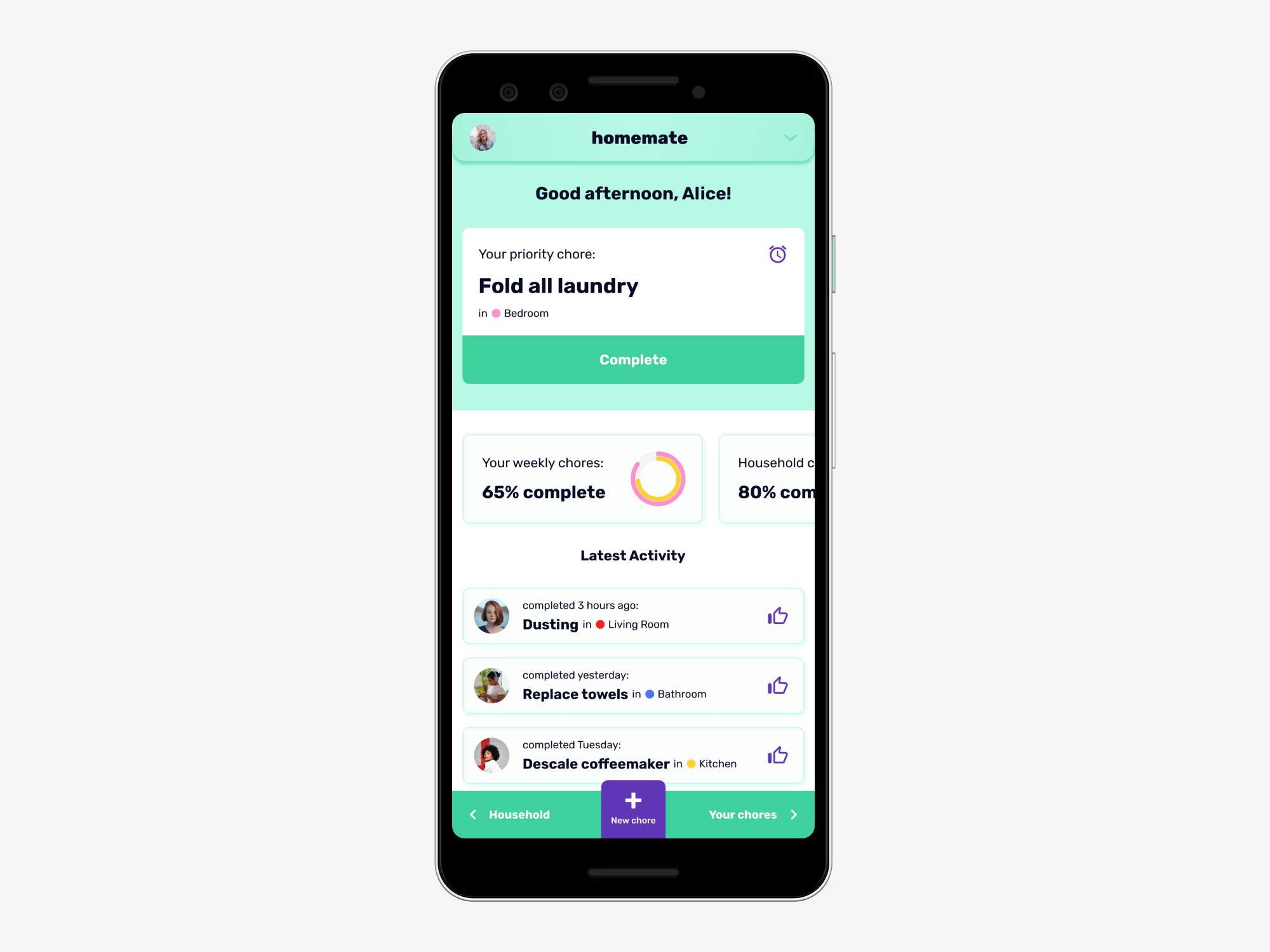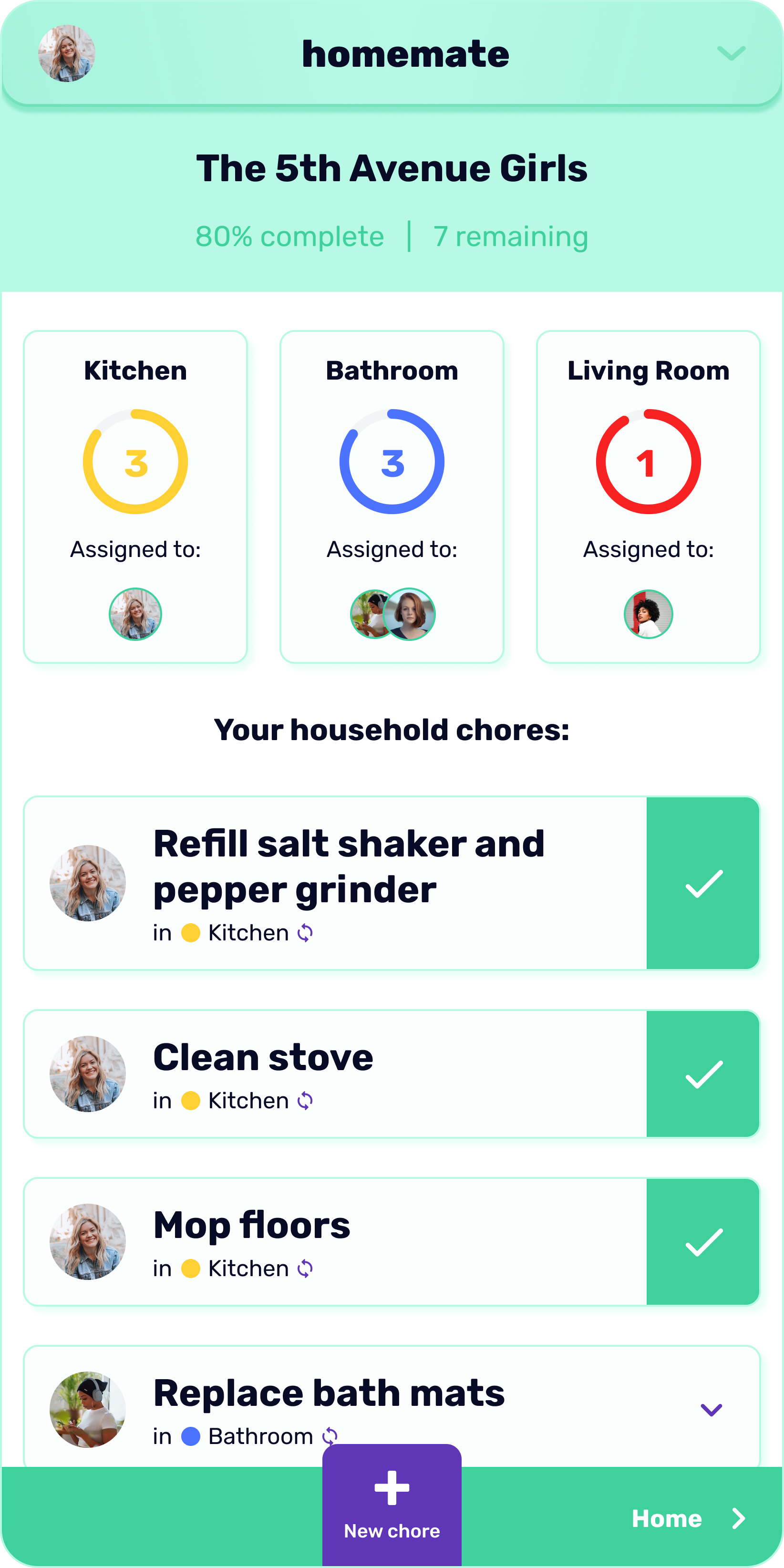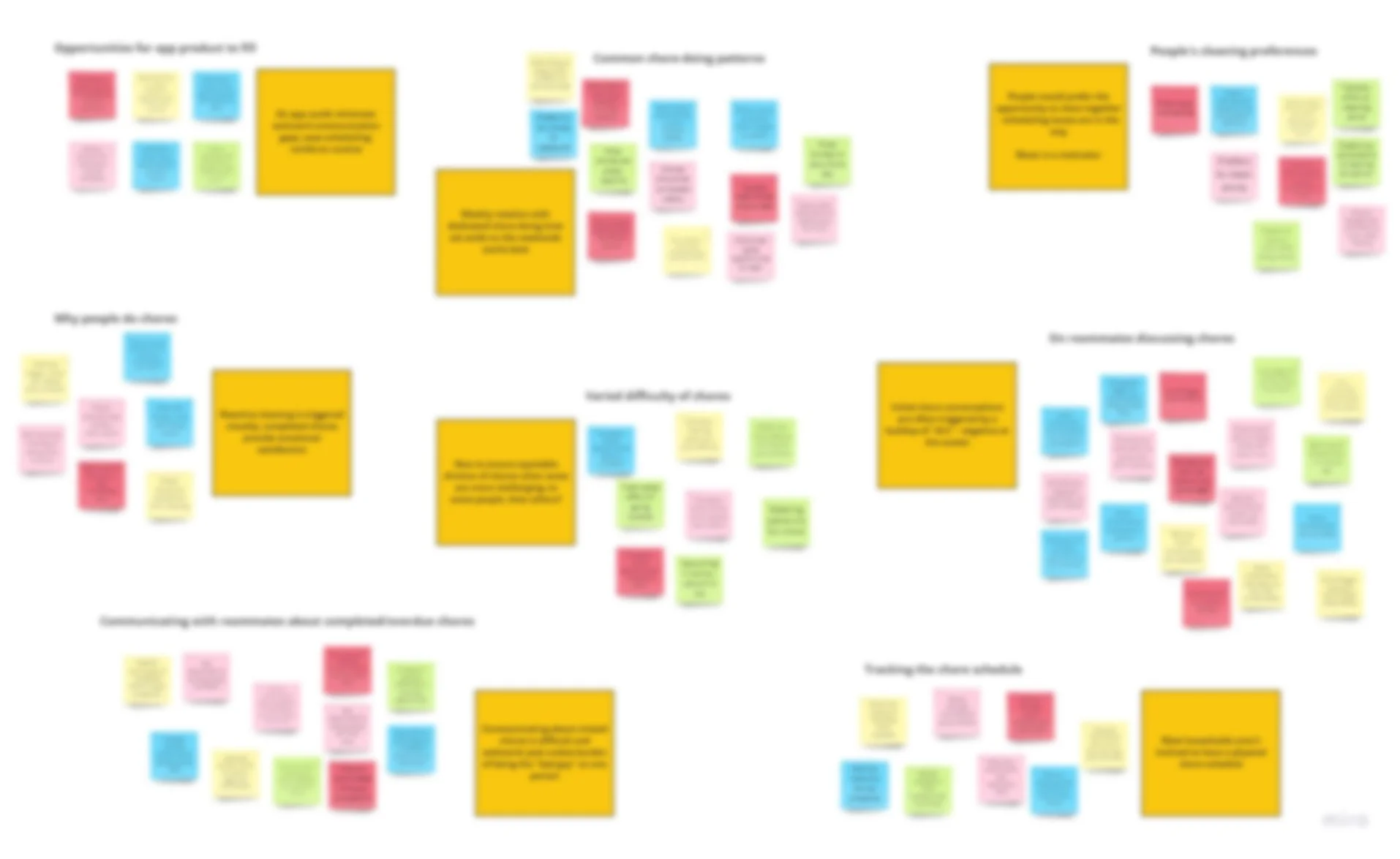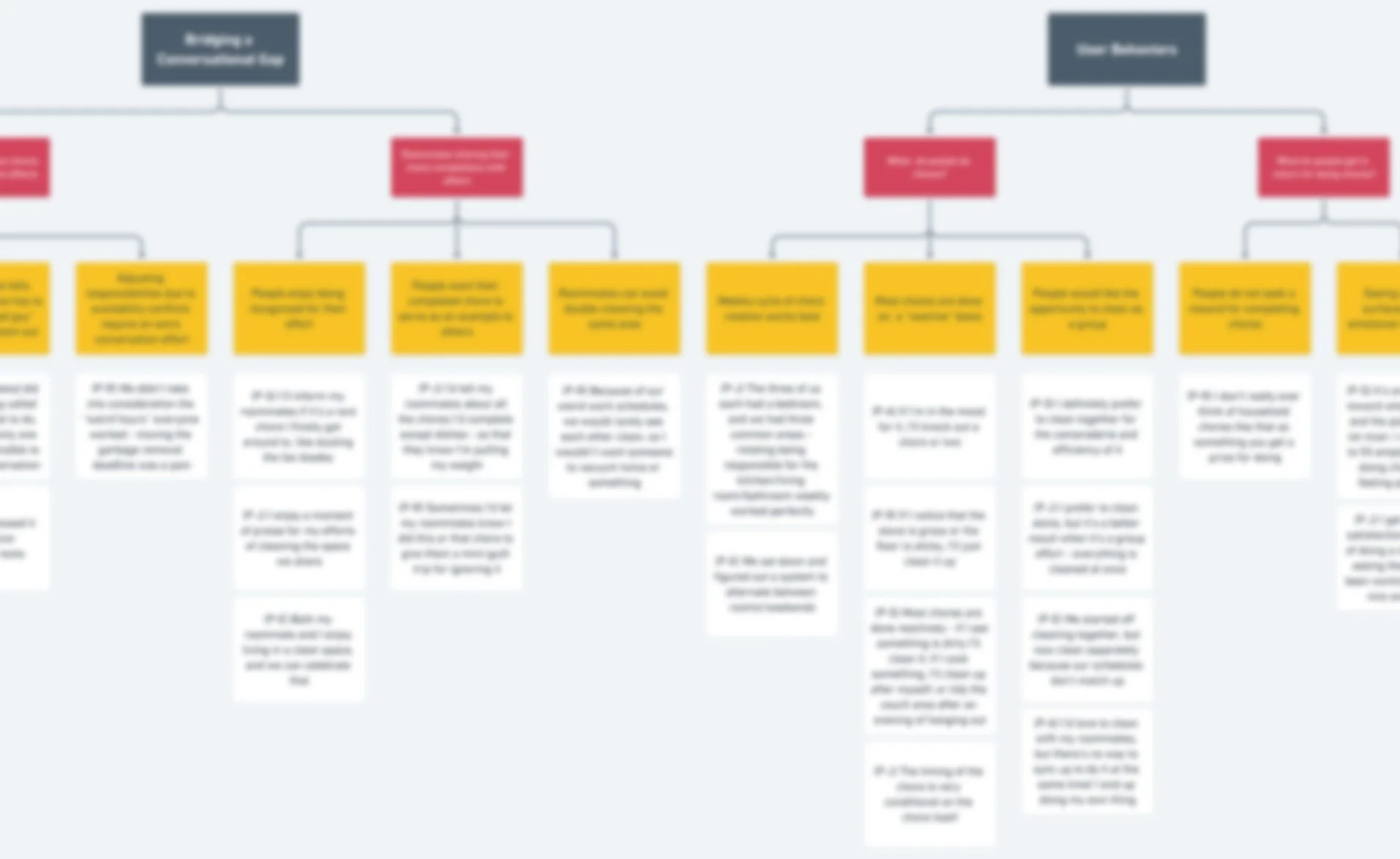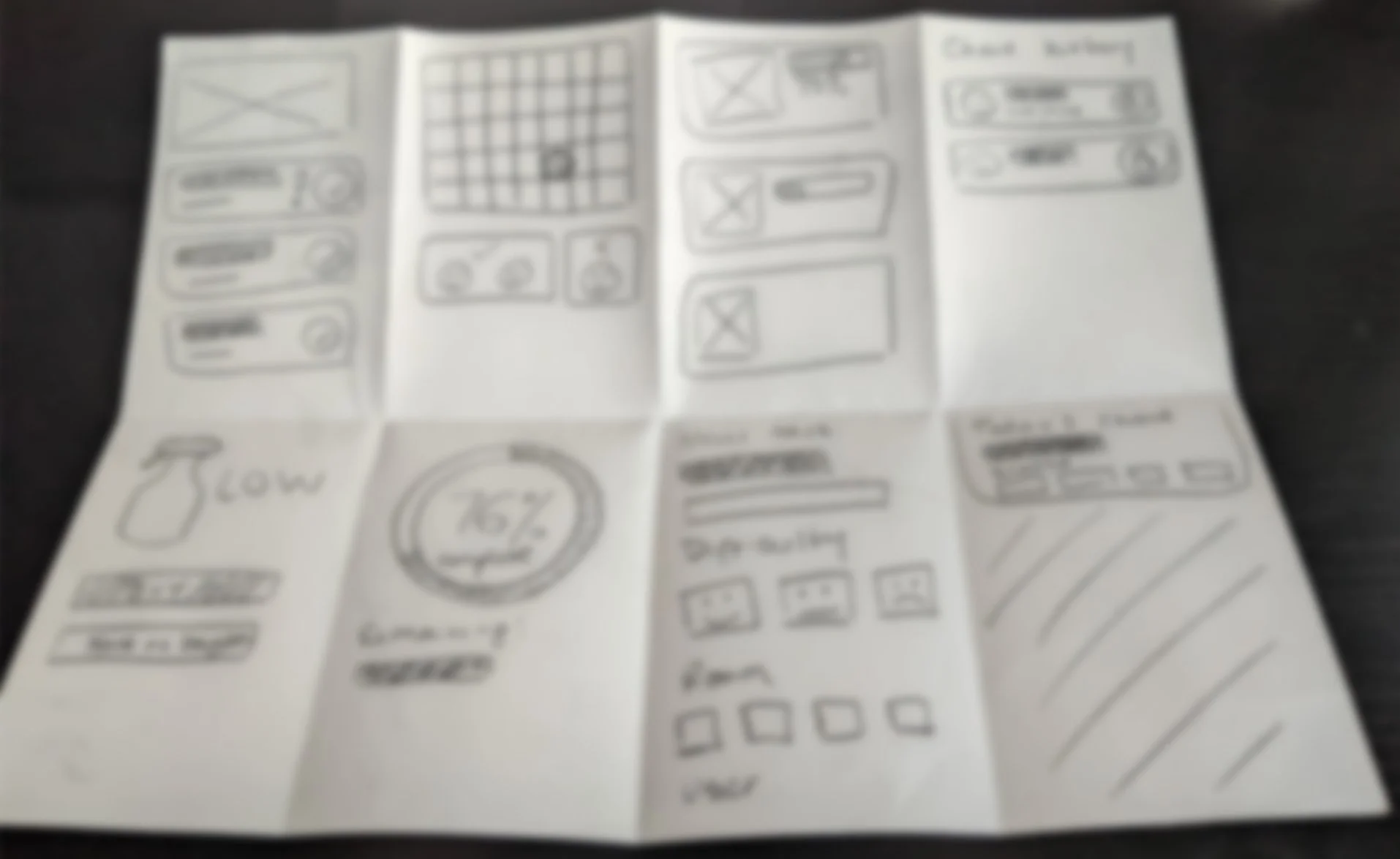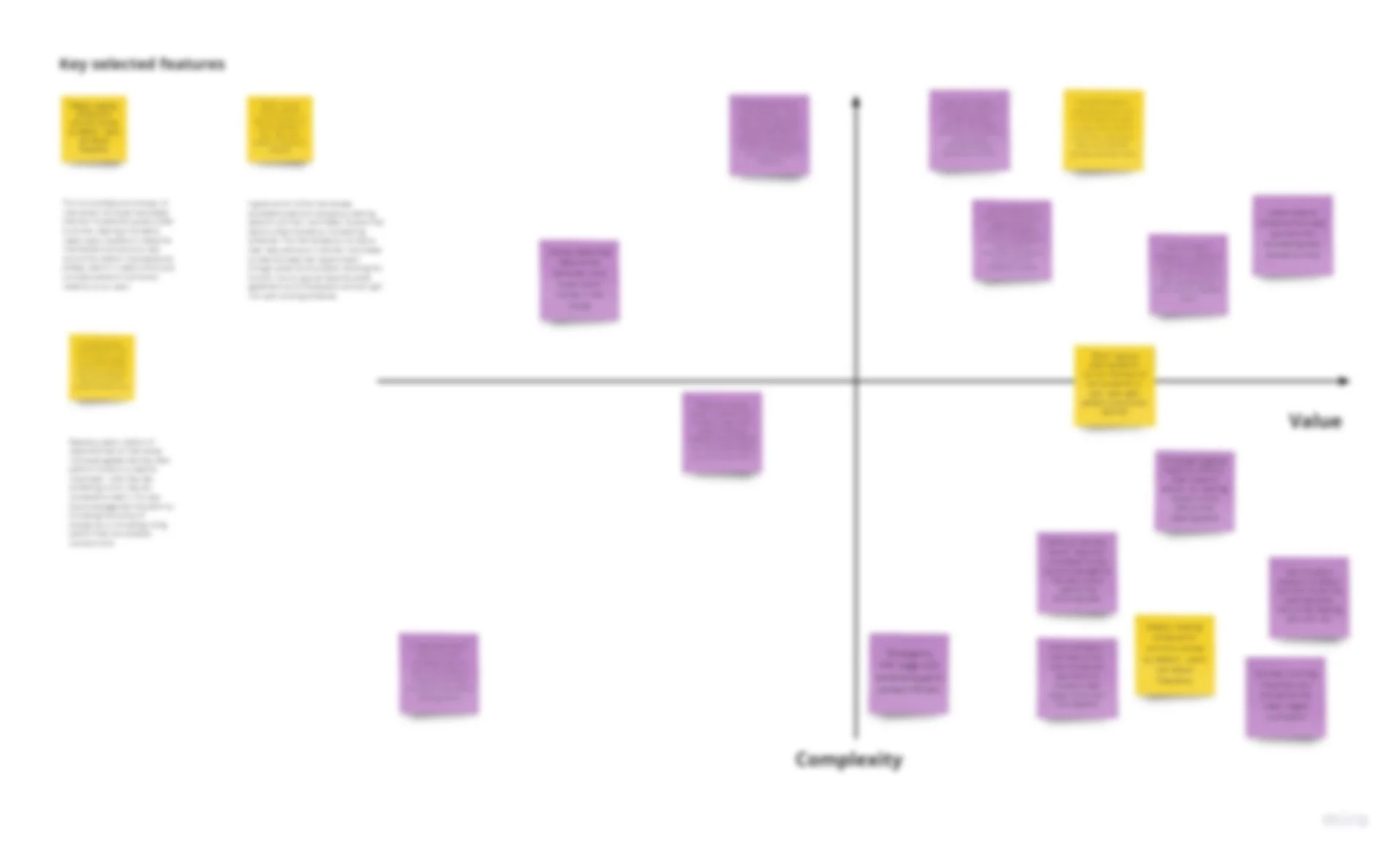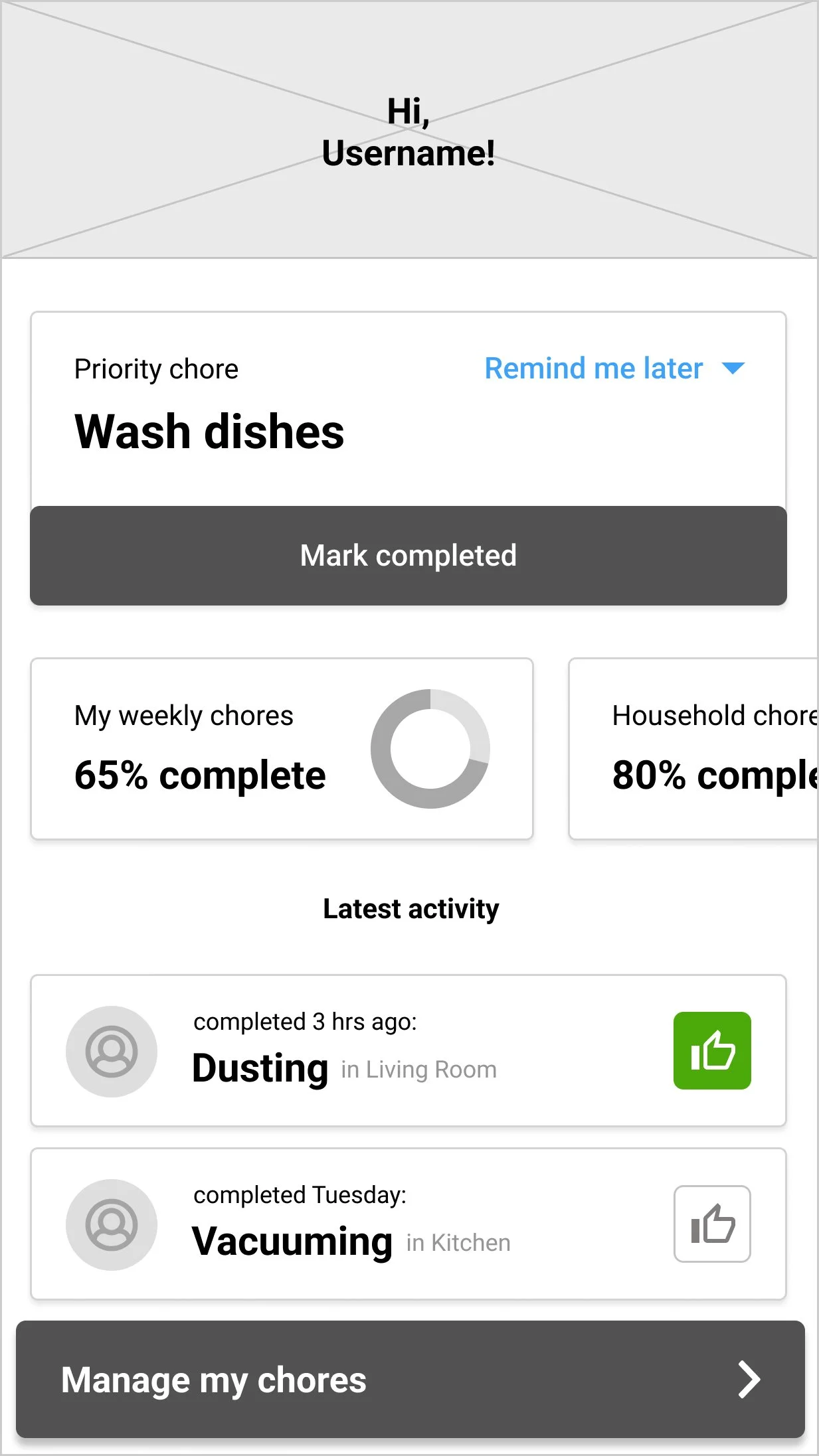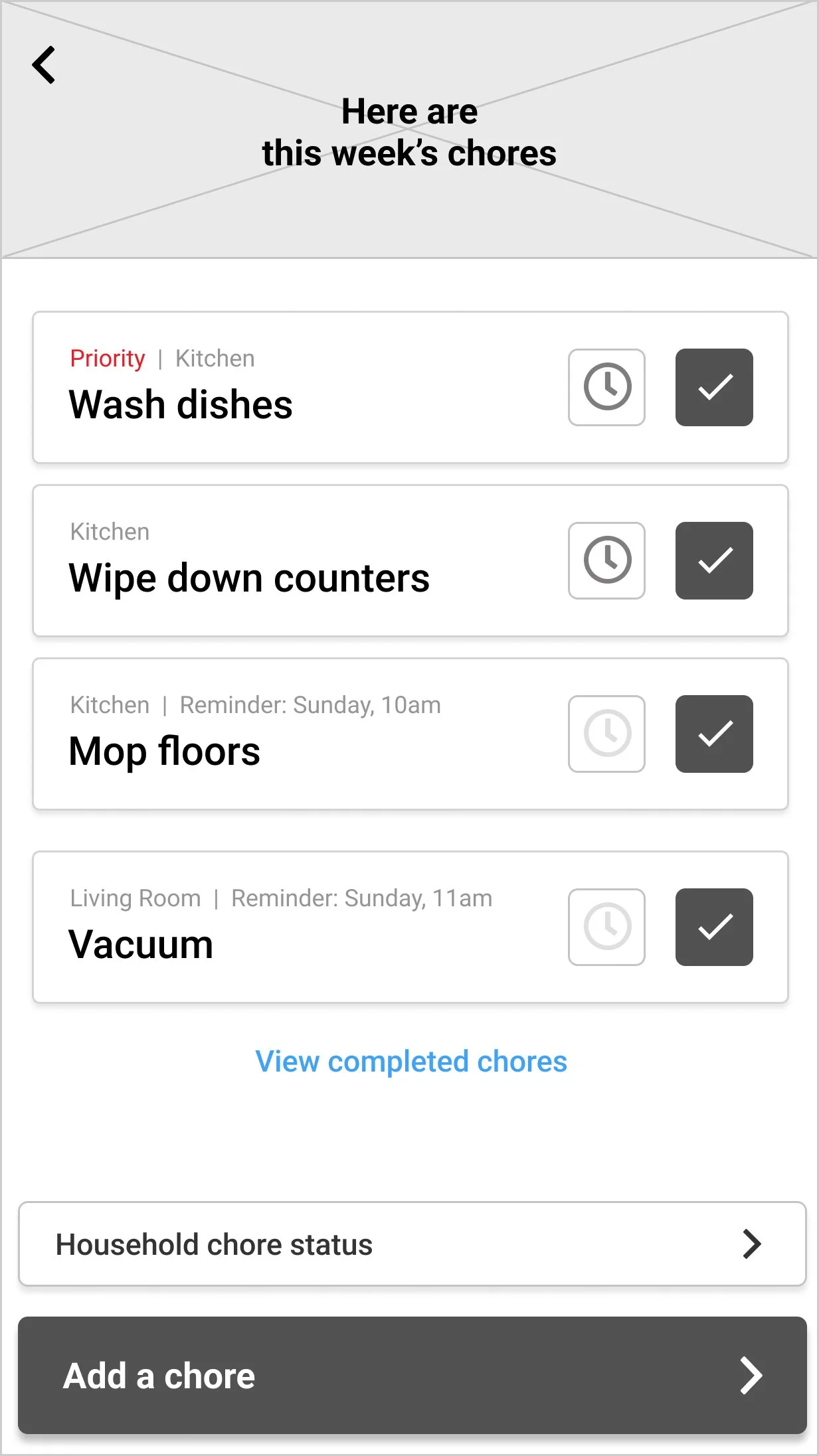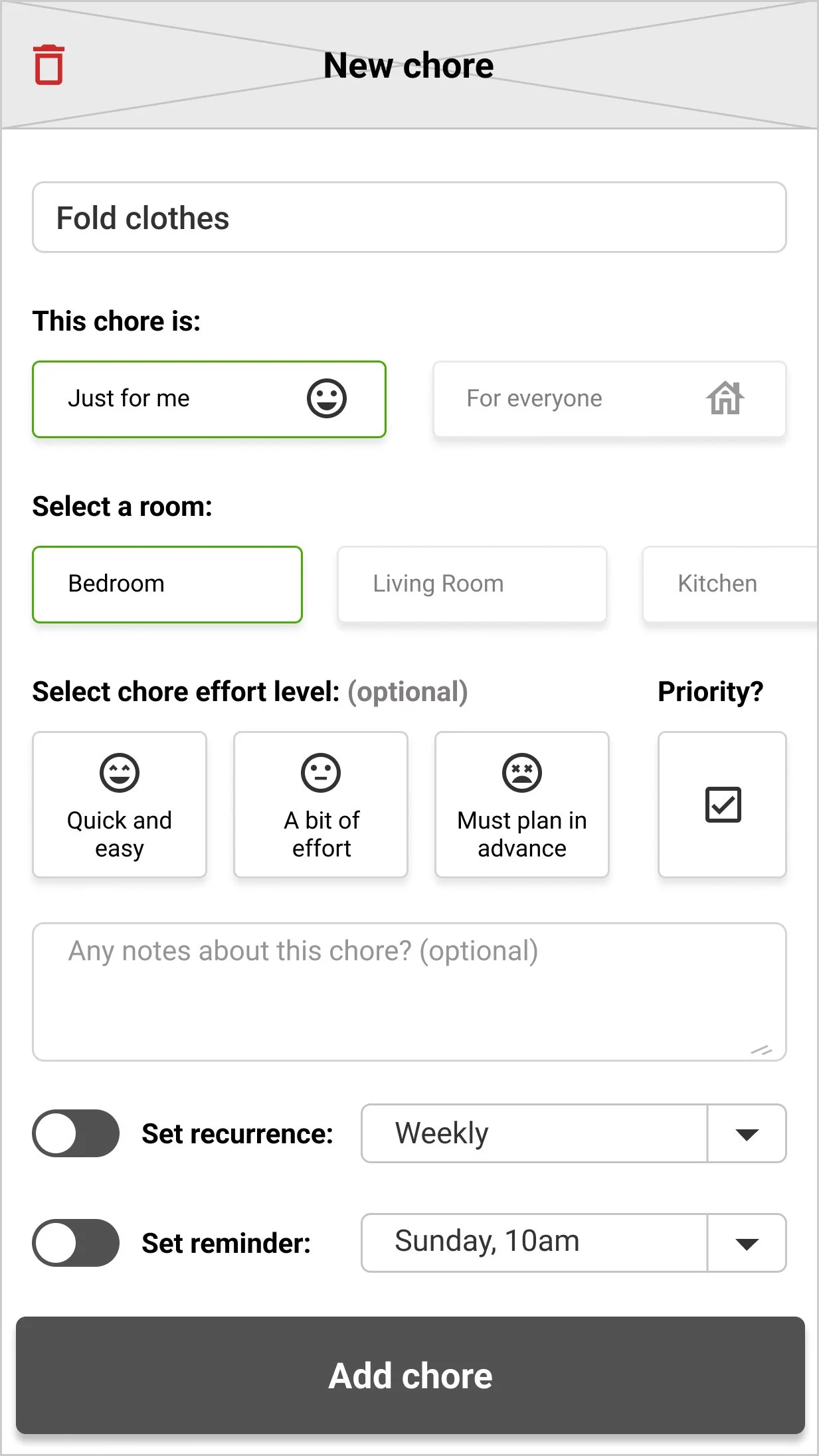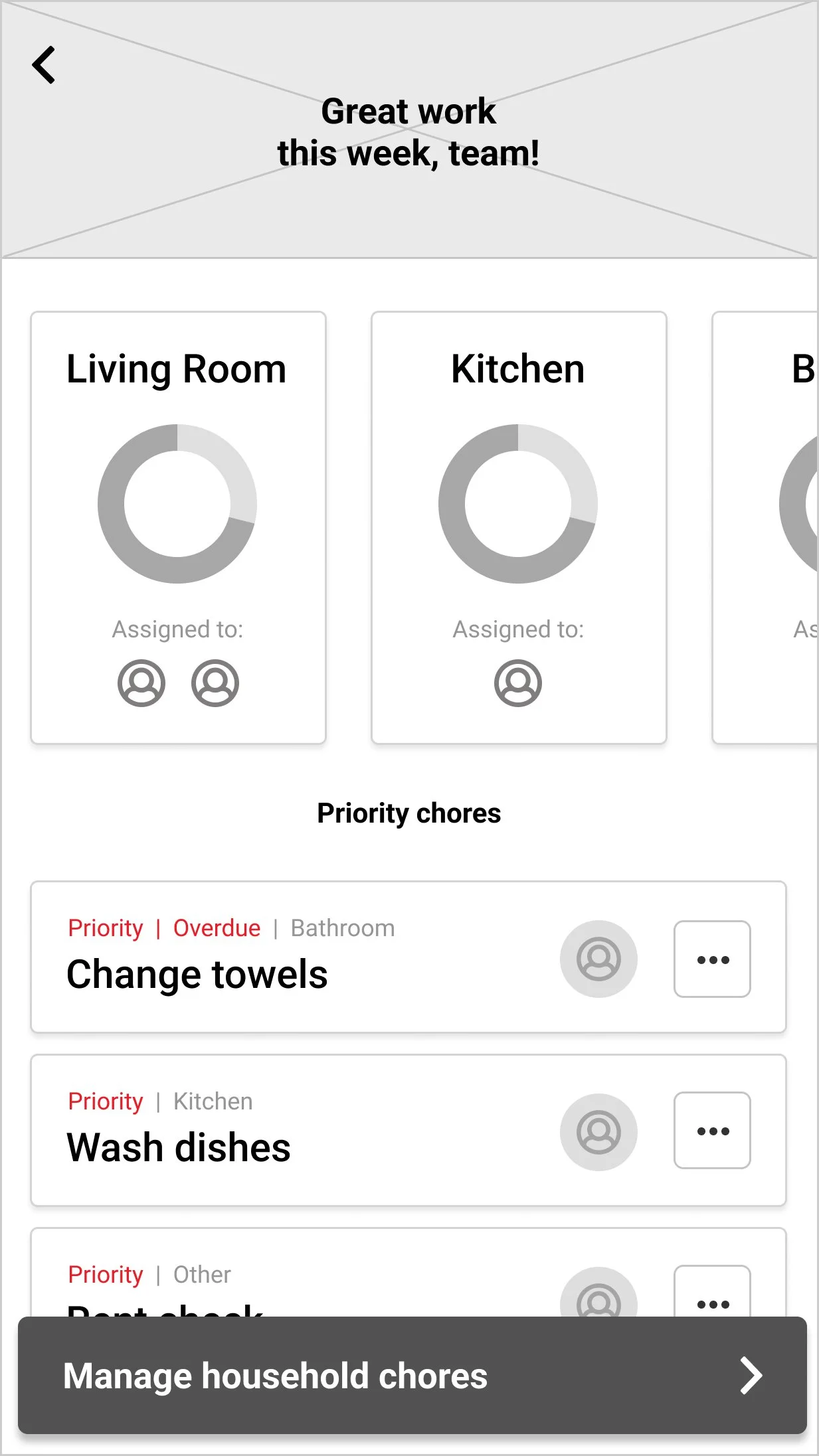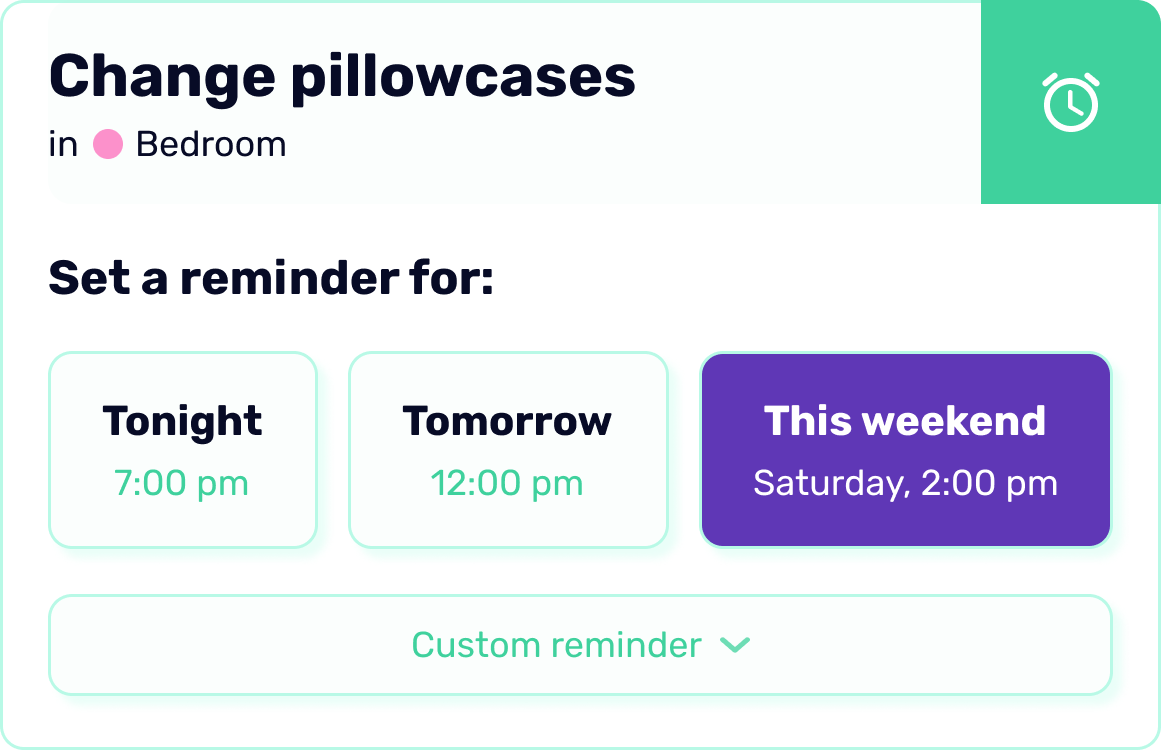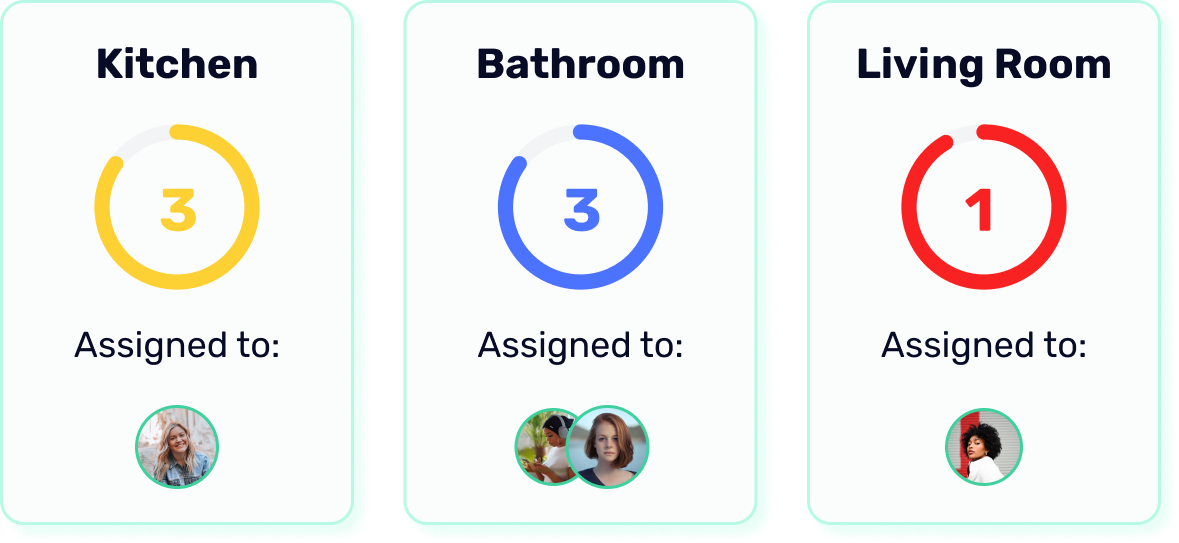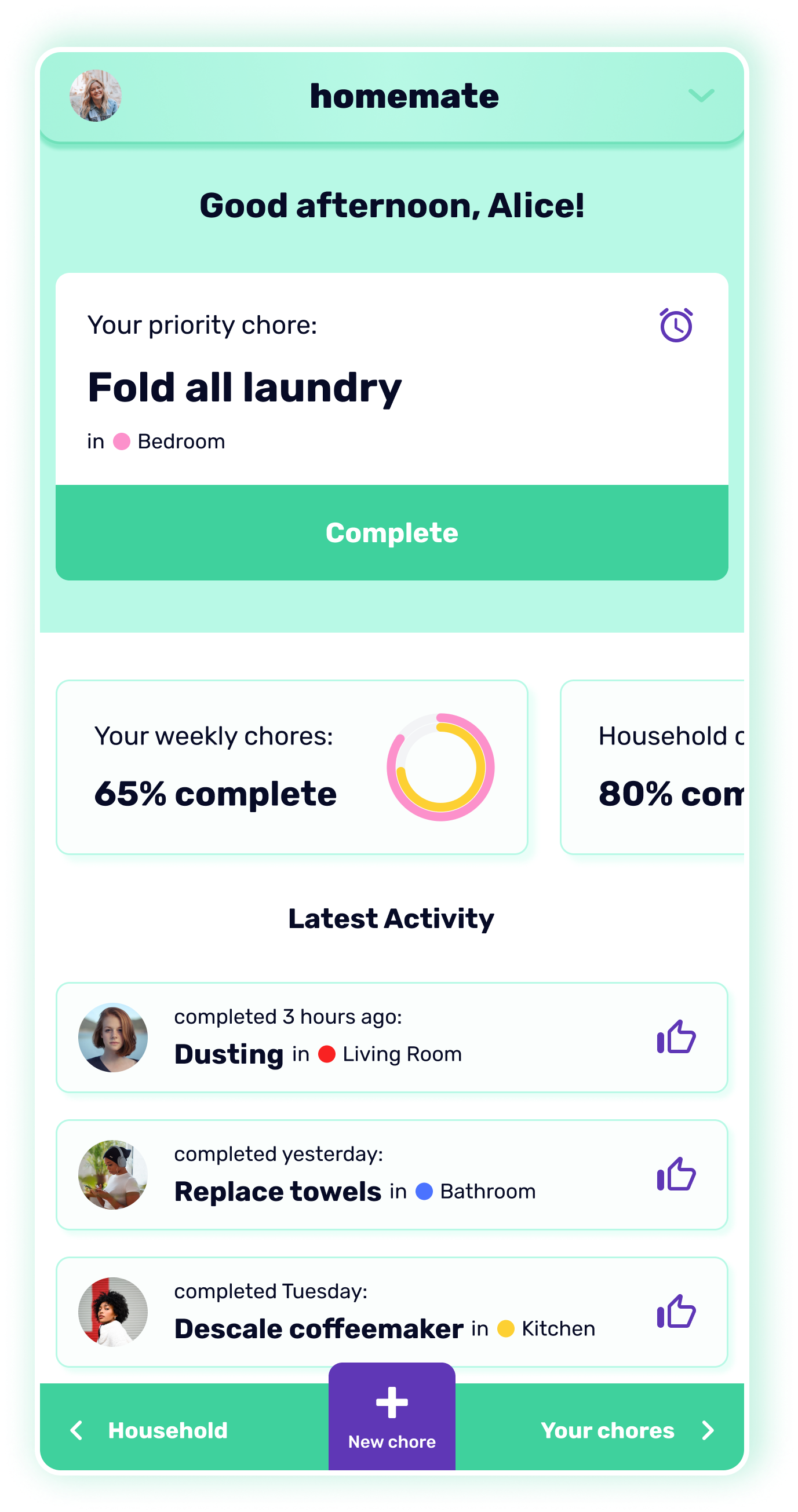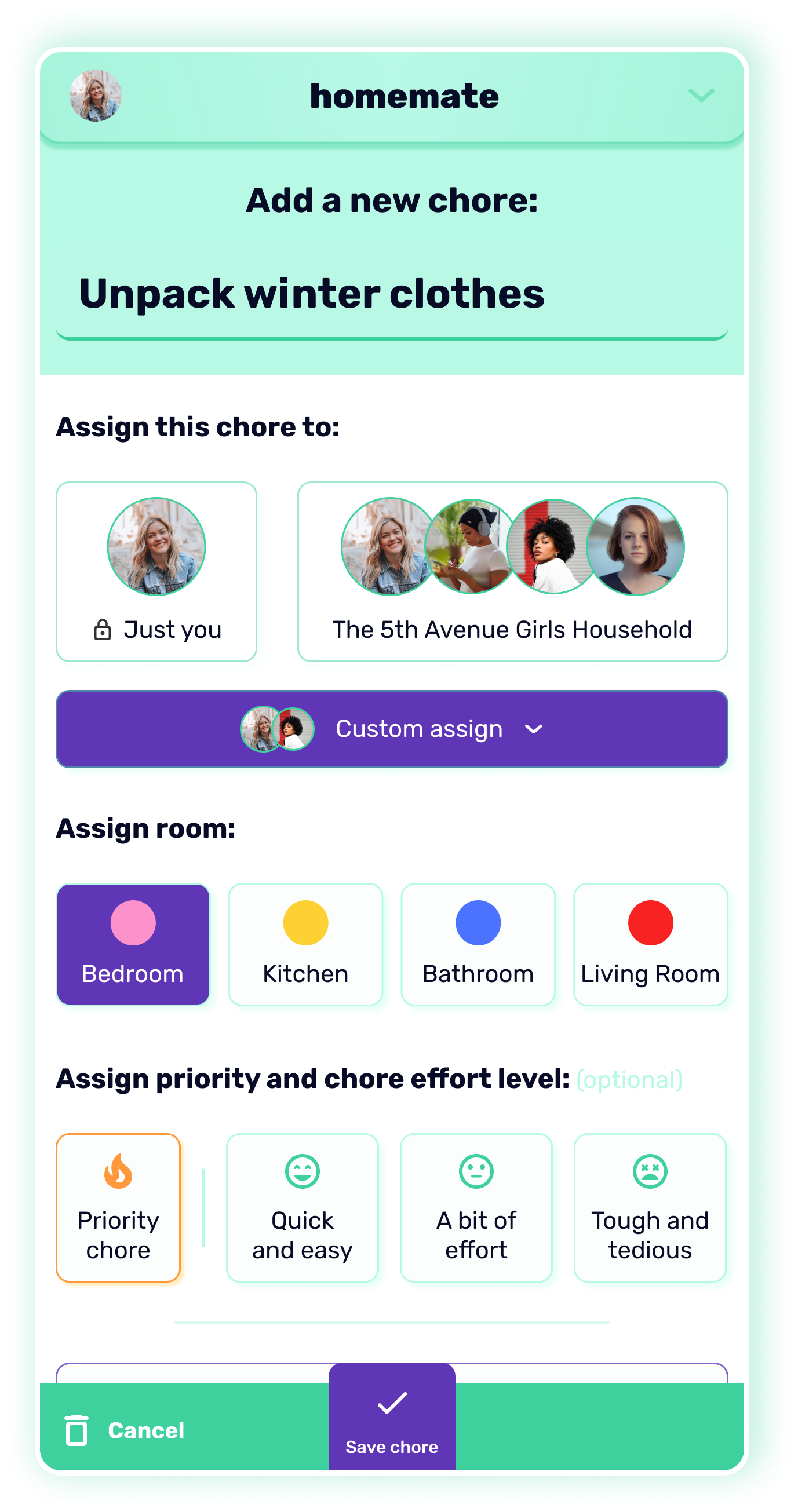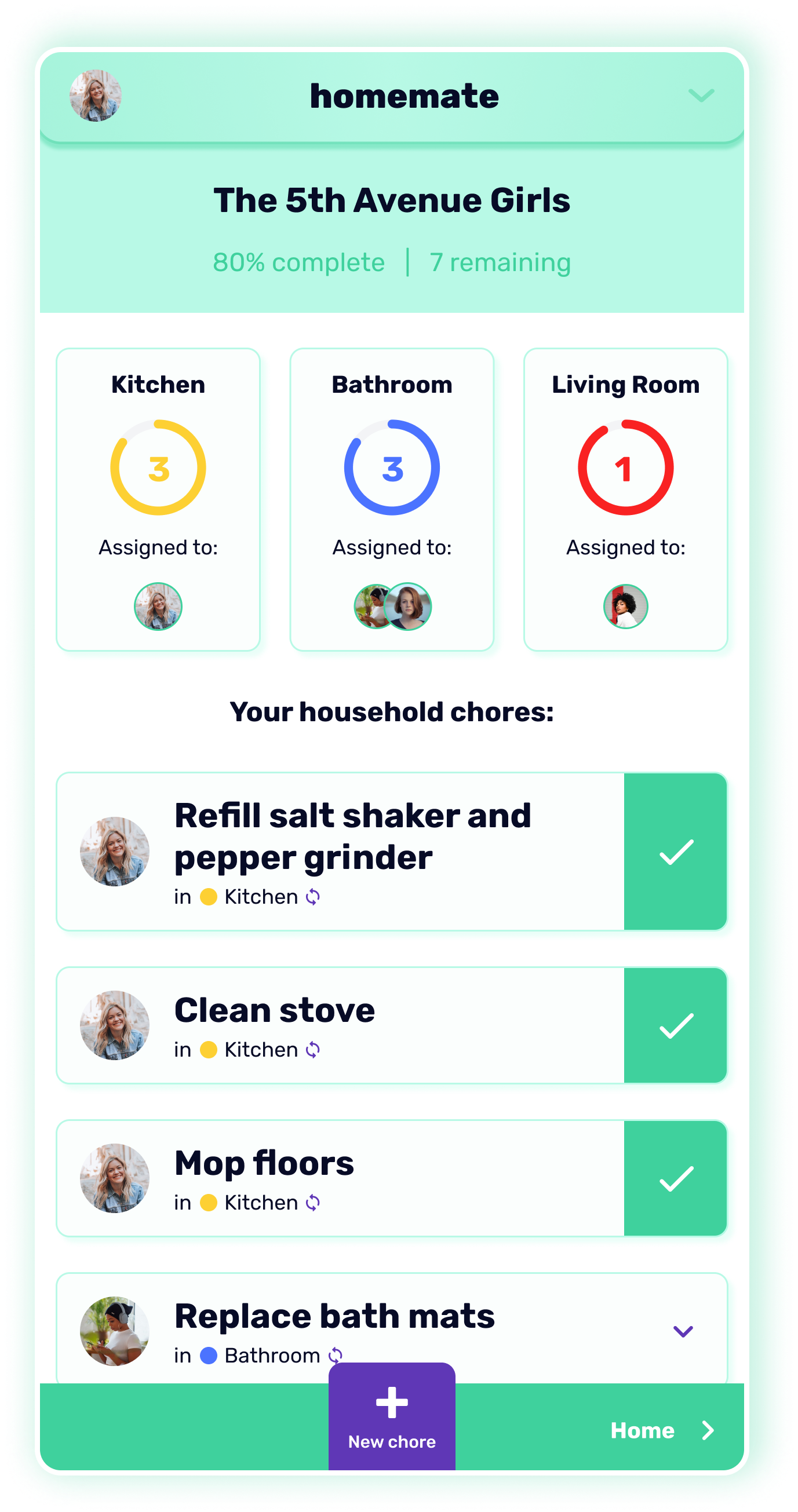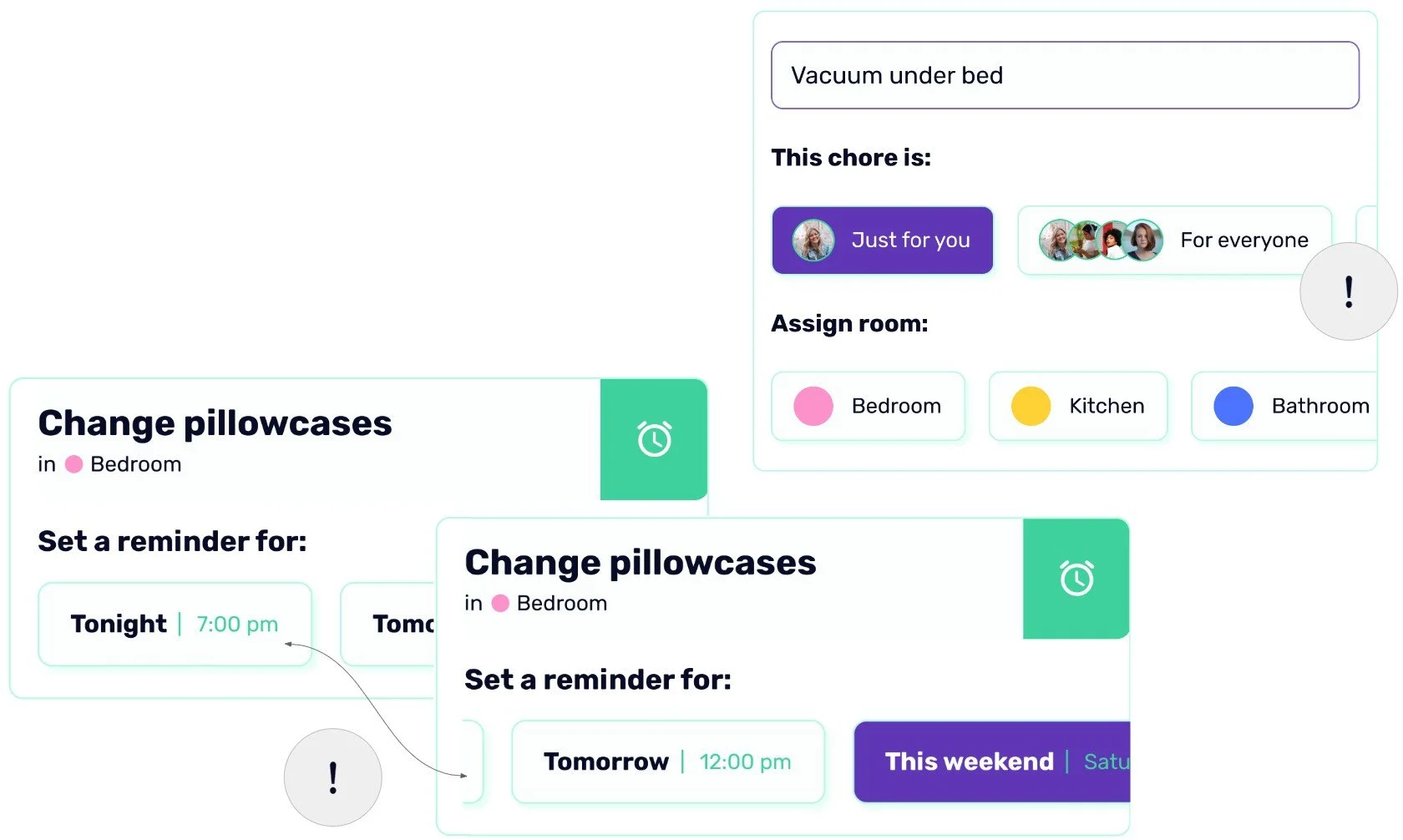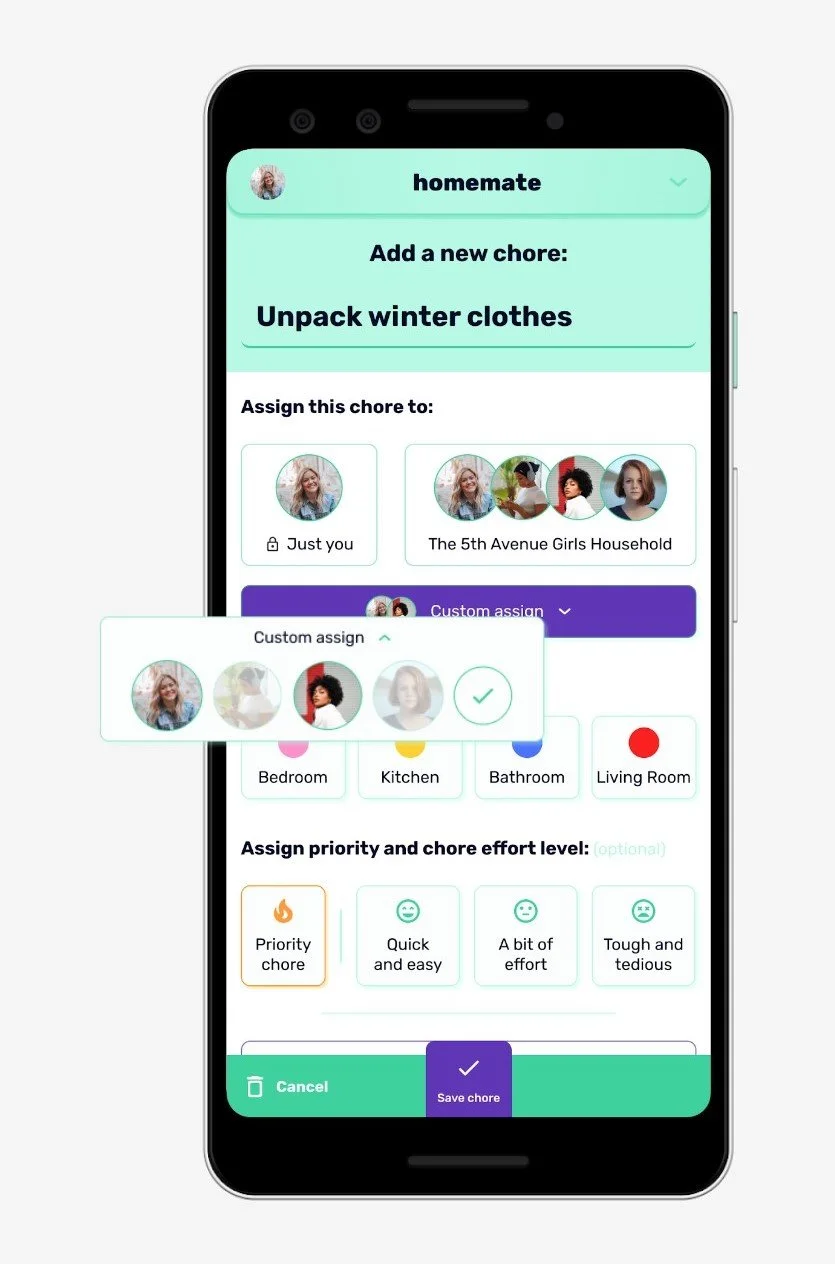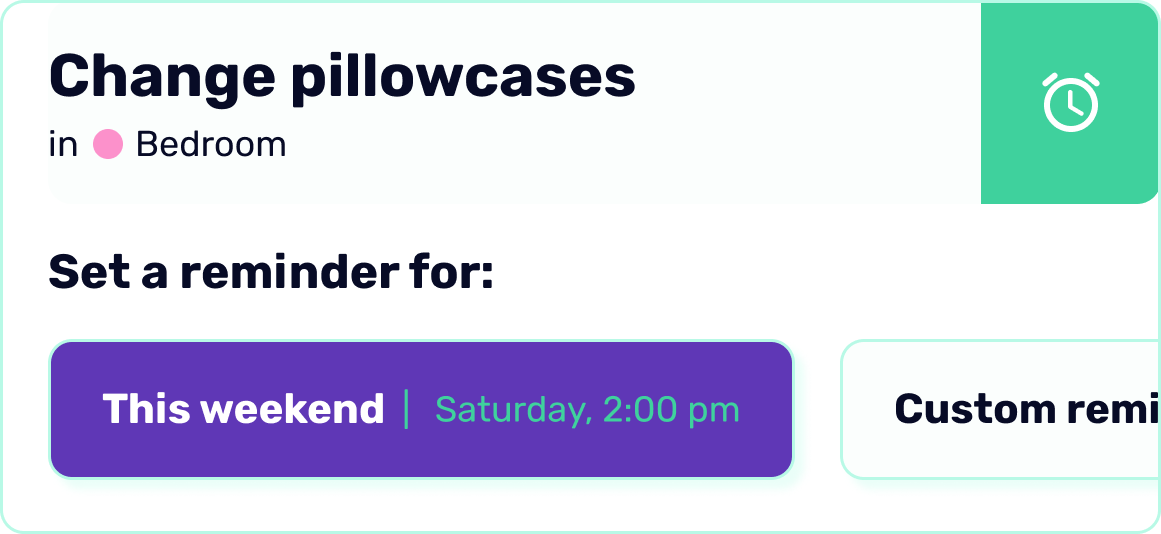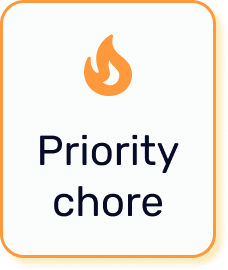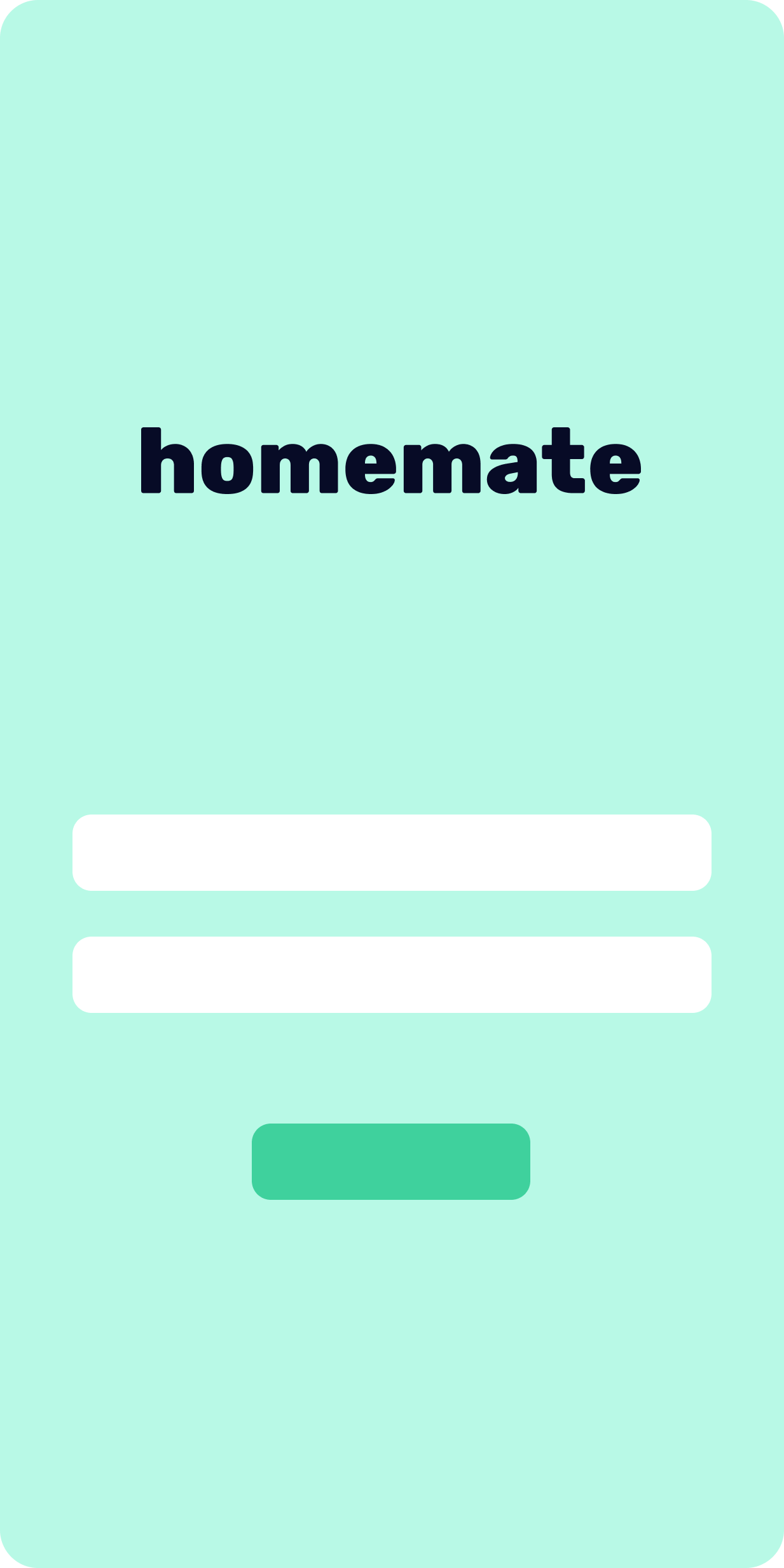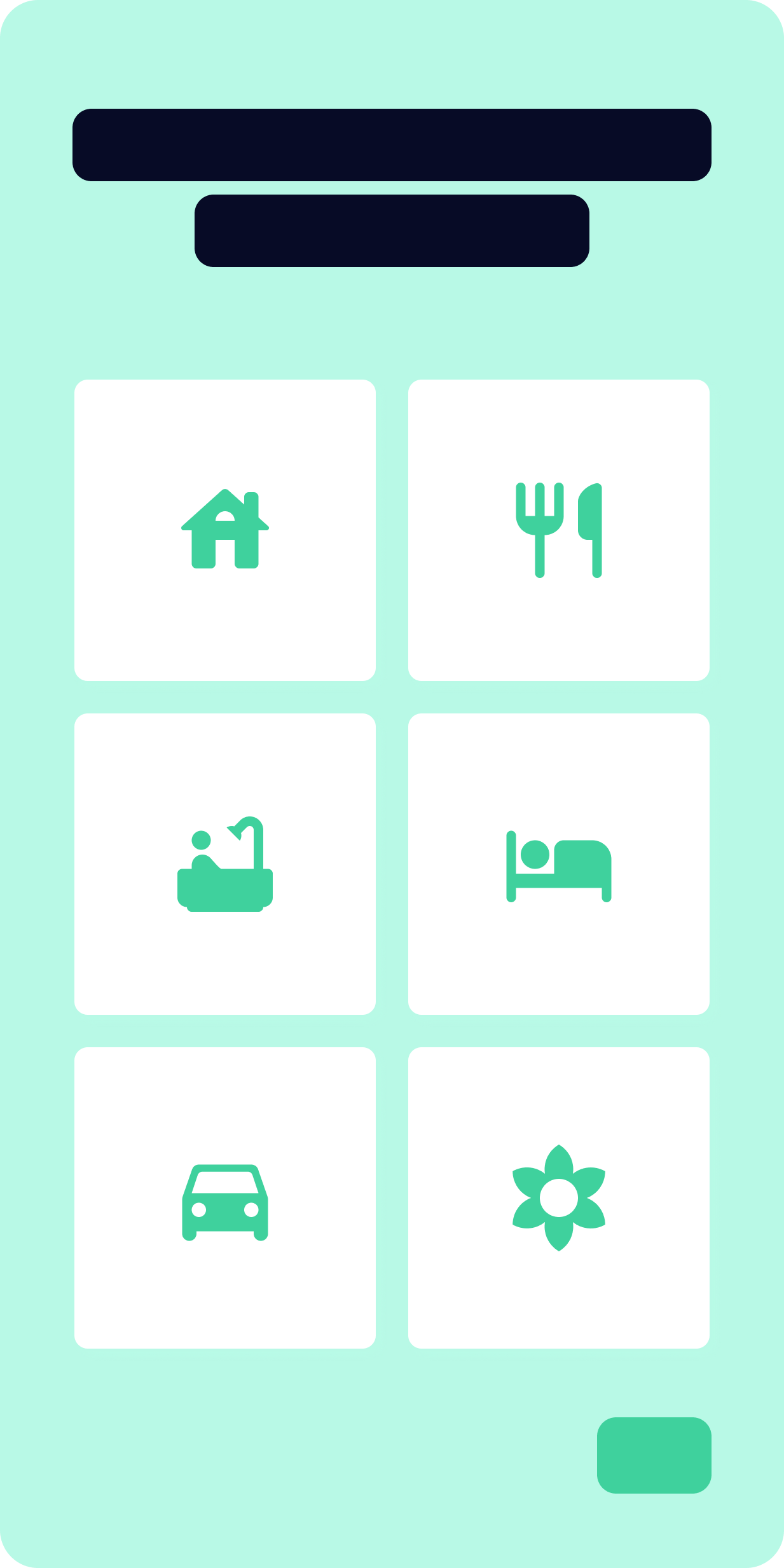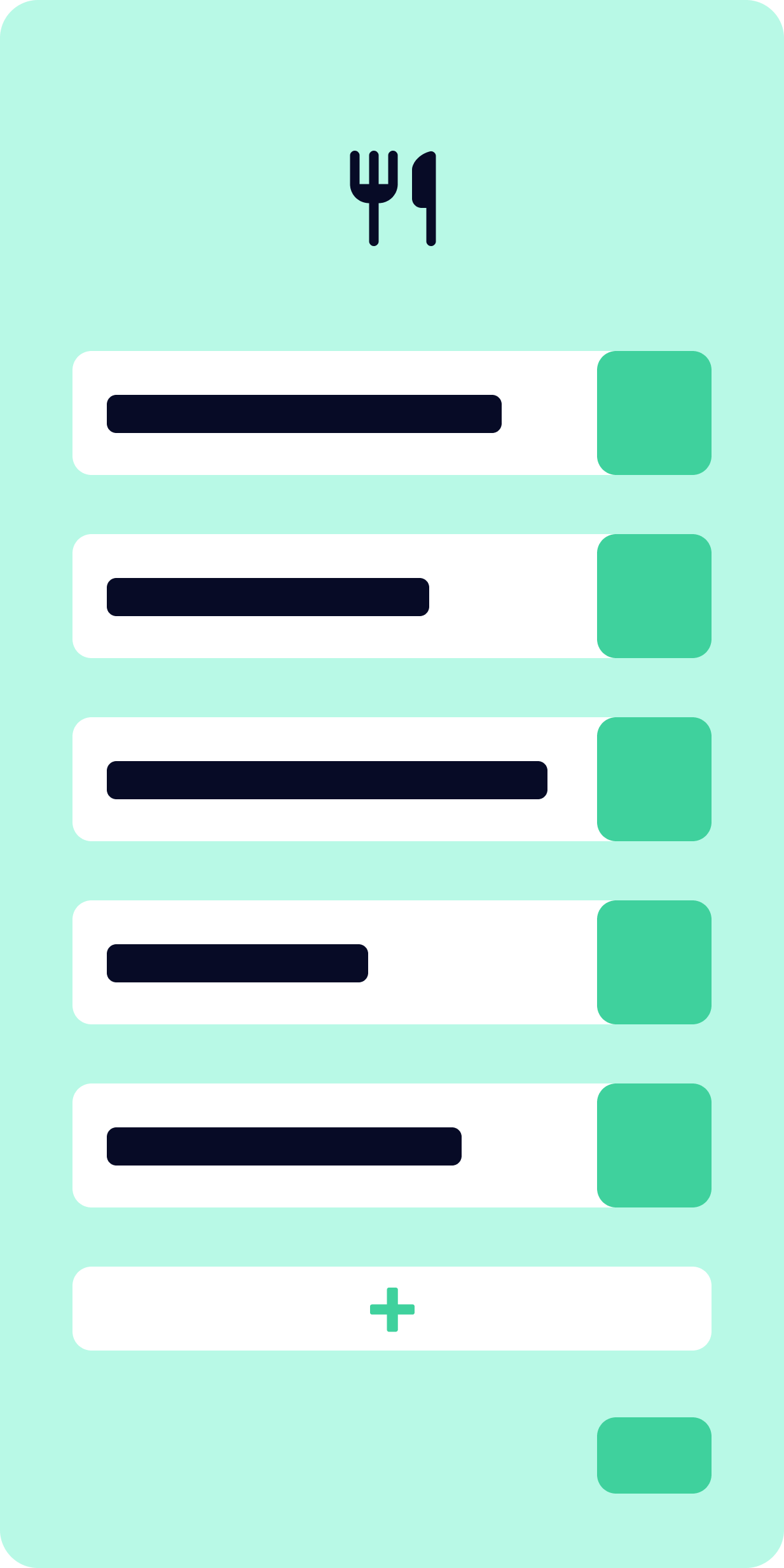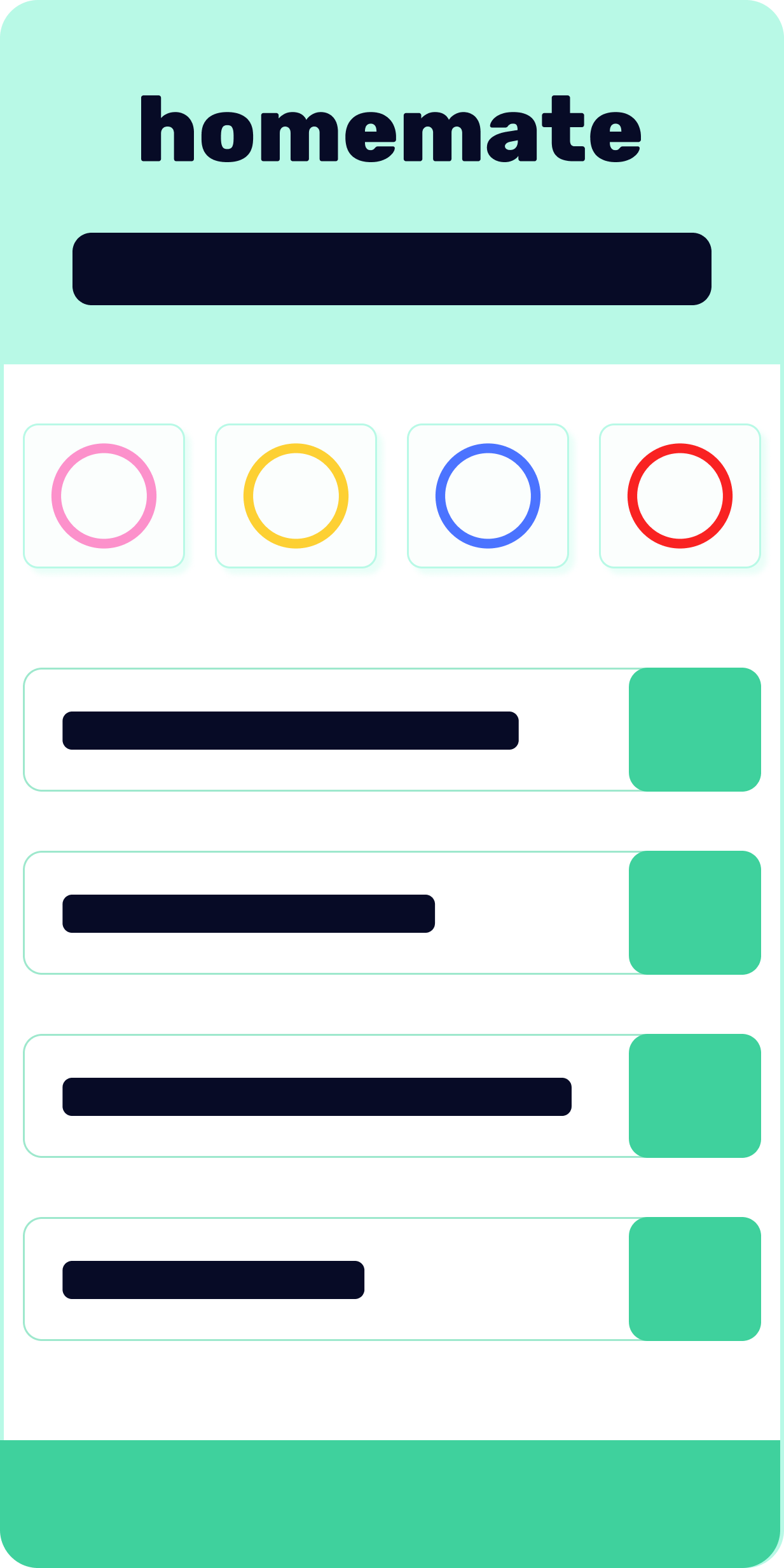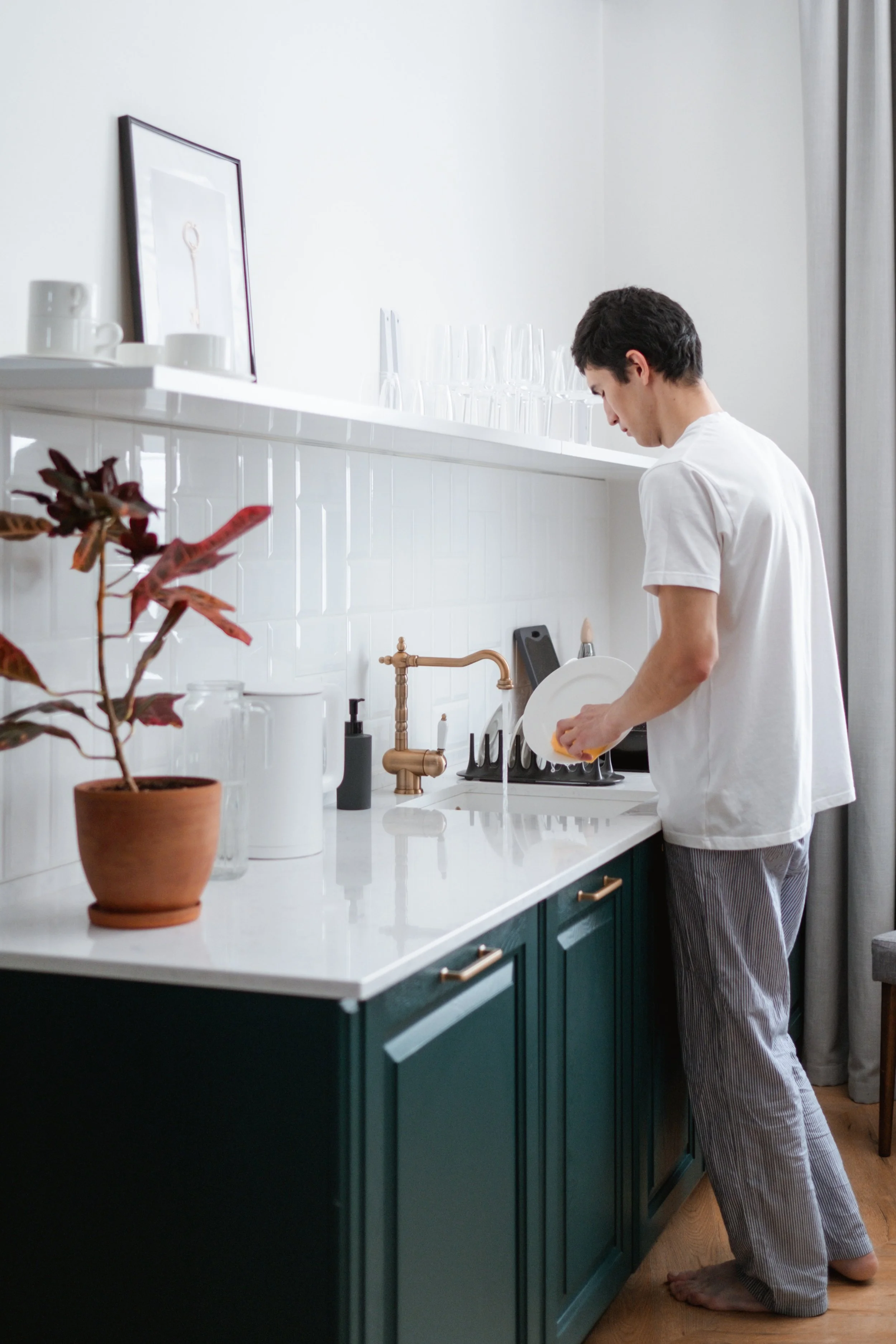A UX Research & Design case study
HomeMate is a household chore management app for interconnected use by young adults cohabitating in a shared space such as an apartment, house, or dorm.
Unlike family-oriented apps that utilize gamification elements, HomeMate is an organizational tool for a collective of independent, fast-paced roommates needing a dynamic system to equitably allocate common chore responsibilities, and hold themselves and each other accountable to their share.
Skills
UX Research
UX Design
Conceptualization
Prototyping and iteration
Branding strategy
About HomeMate
HomeMate was the central project of my 2022 User Experience Design course. It is the product of my first ever foray into UX research and building apps in Figma. Though limited in its design and featureset, it is a strong concept I look forward to improving in the future.
Conceptualization
In 2017, one-in-three (79 million) adults in the US reported living in a shared household, with roommates that are not family or a significant other. Whether long-time friends or complete strangers, cohabitants of all ages frequently clash over the topic of chores. Gaps in communication, mismatching expectations, and the struggle to equitably divide the responsibilities often lead to resentment and even aggression between roommates.
In a 2022 survey of college students…
recognized a clean room helped them feel their best, mentally and physically
93%
but…
were not adequately prepared to clean on their own upon arriving to college
72%
and…
argued with roommates over cleaning their shared space
71%
UX Research
I scripted out and conducted 20-30 minute formal interviews with participants who were:
26-28 years old
College graduates, now working full-time
Currently sharing apartment spaces in NYC with 2-4 similarly aged roommates
To shape the concept of HomeMate, I was seeking to explore:
Systems households currently have to manage chores
Gaps in those systems
Challenges in communication and accountability
Common trends in chore habits
Research Findings
The interviews uncovered a lot of interesting trends, common issues, and insights, such as:
Every household had some form of a weekly rotation system to split up common chore responsibilities
Participants remarked that since each chore takes a varying amount of time and effort to complete, personal preference and ability make some chores easier/harder
Many enjoy the camaraderie of cleaning together and expressed the desire to do chores as a group more often… but usually found it difficult to match up schedules
Almost all recalled having uncomfortable conversations with their roommate(s) to address slacking behavior, lack of responsibility, or overdue chores, usually once rancor has begun to brew
Many of the interviewees expressed interest in trying out a digital solution to chore management, seeking:
Moving beyond a group chat into something more formal
Convenience of using a mobile app vs. a physical printed chart or similar analog approach
Personal and shared accountability
Improved organization and scheduling
Research Synthesis
Utilizing various forms of media and design sprint methods, I organized the data gathered in the interviews into actionable, insightful diagrams, which guided future steps of the project.
Lo-Fi Prototyping
The research phase of the project helped me further shape the mental concept of HomeMate that I was working towards. With a limited time-frame and just beginning to explore Figma, I narrowed the scope of the prototype featureset:
Weekly chore rotation system
Personalized, filterable chore list
Effort-based task weighting
Self-managed reminders and scheduling
“Like” feature for acknowledgement of others’ efforts
Priority labeling for critical tasks
Visibility into overall household cleanliness status
Using elements from an Android OS-like UI kit, I created a basic low-fidelity prototype in Figma, featuring four interactive screens:
Homepage
Chore Hub
New Chore creation
Household Status
Concept: Chores in HomeMate
I had a detailed vision behind what I would want the most fleshed-out version of HomeMate to operate like. A key differentiator between HomeMate and other to-do apps was the background operations behind Chores. As an example, I envisioned utilizing machine learning to gather data from users as HomeMate evolved to accurately predict human behavior.
-
Scenario 1: Person A hates vacuuming. Person B doesn’t mind it, but hates washing dishes. Person C would rather do both of those than take out the trash.
Scenario 2: Person A always gets stuck doing the hard work of scrubbing the oven and deep-cleaning the bathroom. Person B hardly does much but water plants and fold the couch blankets.
HomeMate takes preferences into consideration when assigning chores, allowing users to do what they find easier more often, but still receiving the tough chore every once in a while to keep things fair.
-
Long-term tasks are out of sight, out of mind, until they are timely to be assigned and completed.
Example: A shared bathroom sink should probably be sanitized at least bi-weekly, but a microwave might wait to be cleaned every six months or so.
-
Sometimes, things might be easier if you do them together.
When a significant number of chores is about to be due, HomeMate may invite users to book a Group Cleaning Day, placing an appointment on everyone’s calendars, and delivering periodic reminders.
UI & Branding Development
HomeMate’s color scheme started with a minty-green base color to inspire the feeling of freshness and cleanliness, with purple accents attracting the user to actionable items. Rubik, a lightly rounded font available in a variety of weights was chosen to ensure readability with a friendly, but not immature, look.
The four sections of HomeMate’s hi-fi prototype showcase a path through the following tasks:
Exploring the Homepage | Your Chores hub & reminder flow | Add a New Chore flow | Exploring the Household hub
Usability Testing
A group of testers explored the original HomeMate prototype, testing for common usability, readability, ease of navigation, and effectiveness of the featureset. Testers were asked to navigate from screen to screen and complete tasks such as adding a new chore, and setting a reminder to complete a chore.
Users generally found the prototype user-friendly and enjoyed the visual appeal of the design. Some major obstacles to usability were revealed and testers provided key feedback on language and color choices throughout the app.
Key usability testing takeaway:
80% of testers struggled to complete tasks due to inability to recognize elements cut off by edge of the screen as horizontally scrolling carousels
Prototype Iteration
The HomeMate prototype was improved based on the invaluable feedback received in usability testing.
Majority of horizontal carousels replaced with alternate solutions
Priority Chore coloration changed to orange for more visual urgency
Improved readability of reminder timing flag
Added visual cue to confirm new chore is saved
Concept: User Journey
Future Feature Opportunities
As a household chore management tool, HomeMate has a lot of potential in the helpful services it can provide. Some functionalities to explore are:
Visually evolving graphics representing each room in the household, mimicking the messiness status of that space to encourage cleaning
Emergency Information hub containing critical details such as contact info for the household’s landlord, repair services, lease agreement, etc.
Shared “spare cash” fund contributed to by all roommates monthly, to be used for common expenses like cleaning supplies or groceries
Resource Tracking mode (leveraging machine learning) to monitor usage of cleaning supplies, predict when they might run out, and alert users to replenish them
Educational resources on safe, efficient, and effective cleaning methods


